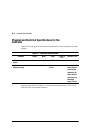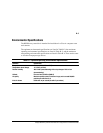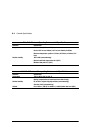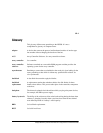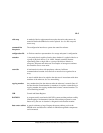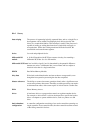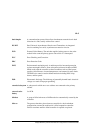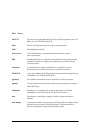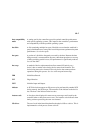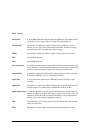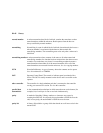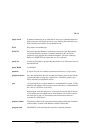
GL–4 Glossary
data striping The process of segmenting logically sequential data, such as a single file, so
that segments can be written to multiple physical devices (usually disk
drives) in a round-robin fashion. This technique is useful if the processor is
capable of reading or writing data faster than a single disk can supply or
accept the data. While data is being transferred from the first disk, the
second disk can locate the next segment.
device See node and peripheral device.
differential I/O
module
A 16-bit I/O module with SCSI bus converter circuitry for extending a
differential SCSI bus. See also I/O module.
differential SCSI busA bus in which a signal’s level is determined by the potential difference
between two wires. A differential bus is more robust and less subject to
electrical noise than is a single-ended bus.
DIMM Dual Inline Memory Module.
dirty data Write-back cached data that has not been written to storage media, even
though the host operation processing the data has completed.
disaster tolerance The ability to resume data center operations shortly after a significant event
occurs at the primary data center. The ability to restart processing can require
an alternate data center, with current copies of critical data in a usable state.
DMA Direct Memory Access.
driver A hardware device or a program that controls or regulates another device.
For example, a device driver is a driver developed for a specific device that
allows a computer to operate with the device, such as a printer or a disk
drive.
dual-redundant
configuration
A controller configuration consisting of two active controllers operating as a
single controller. If one controller fails, the other controller assumes control
of the failing controller’s devices.





